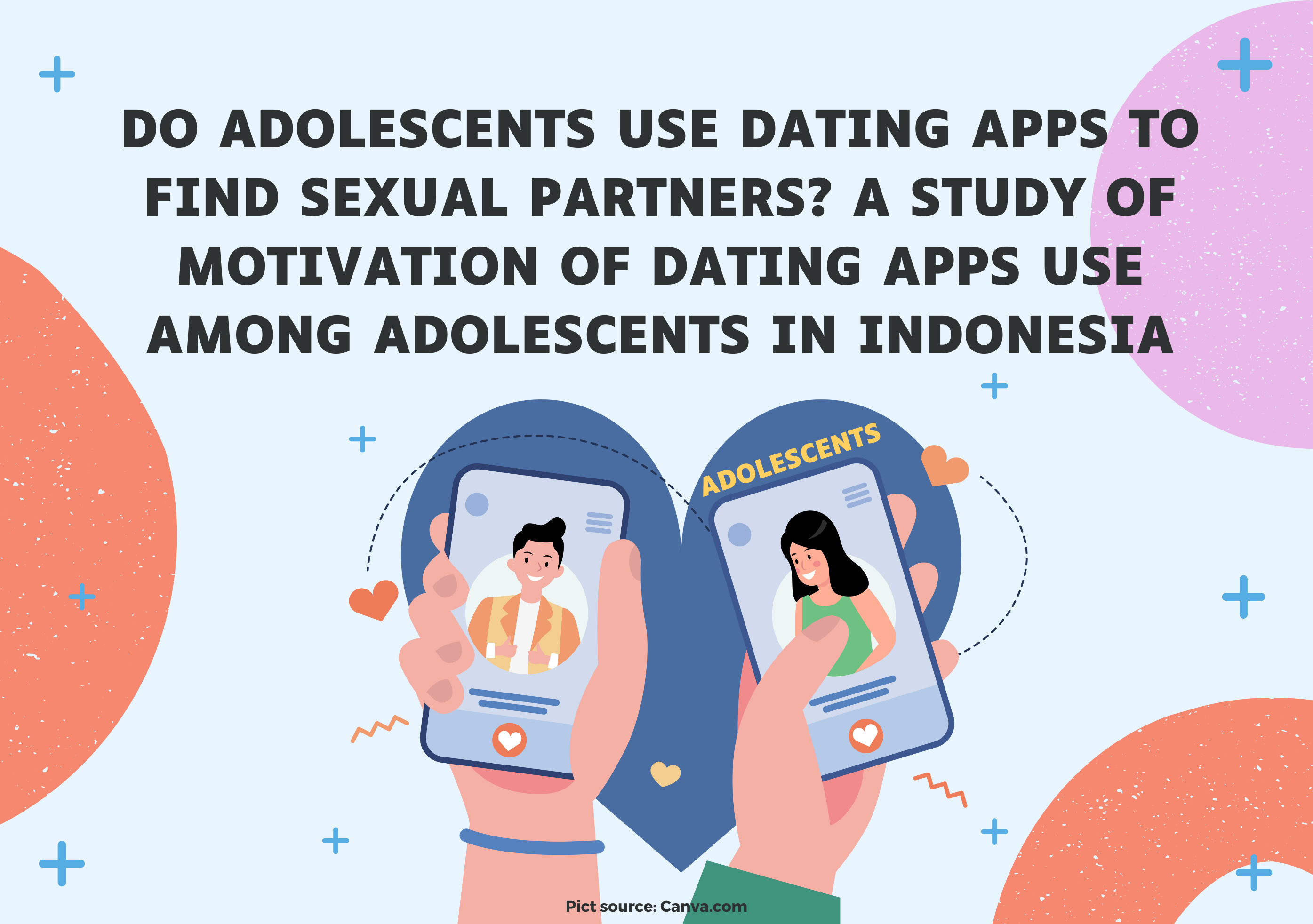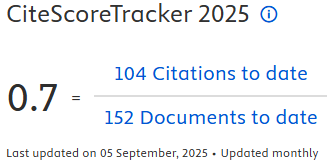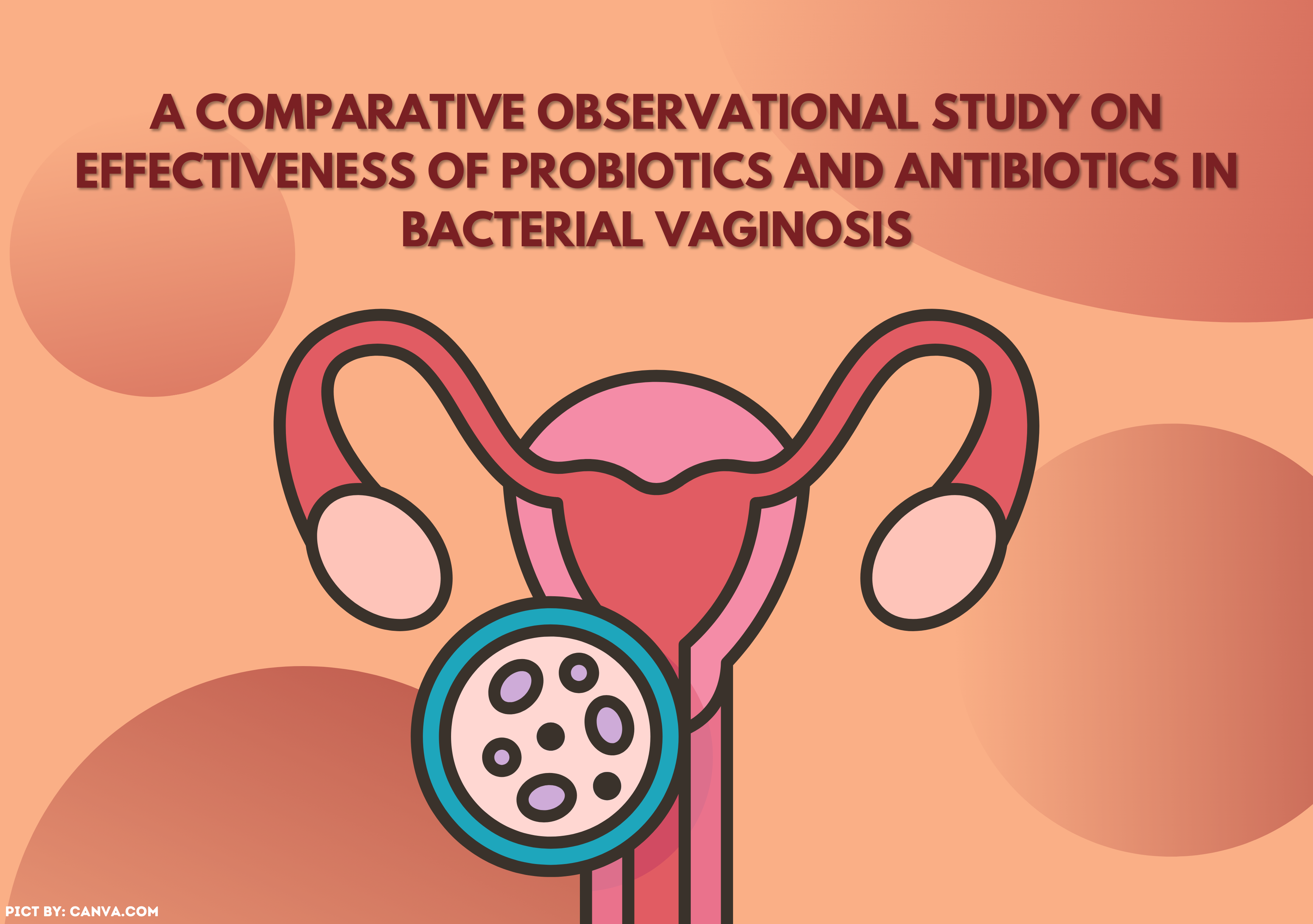DO ADOLESCENTS USE DATING APPS TO FIND SEXUAL PARTNERS? A STUDY OF MOTIVATION OF DATING APPS USE AMONG ADOLESCENTS IN INDONESIA

Downloads
Introduction: The existence of dating apps as a form of technological advancement has given individuals new ways to search for a romantic partner. Twenty-five percent of newlywed couples met through dating apps, while 40% of unmarried individuals were looking for partners online. Behind the search for a romantic partner through an app, some risks keep track of its users, which is associated with increased sexual activity. The use of dating apps for adolescent users should be a concern, given that, in the adolescent phase, initiation into sexual activity has become one of the frequently emerging aspects. Aims: To find out the motivation for using dating apps among adolescents aged 18-24 years old. Methods: The users’ motivation of the dating apps focuses on three aspects: Relationship Seeking, Sexual Experience, and Flirting which are categorized into low and high motivation. The study used a quantitative approach with data collection through online questionnaires on 151 respondents. This study used chi-square as its analytical tool. Result: The study showed that, of the three motivations, the motivation to find a lover was the most common among the participants. Regarding the socio-demographic characteristics, sex and the frequency of use of dating apps show significant association with sexual experience and flirting motivation. Age and region are associated with relationship-seeking and flirting motivation, respectively. Interestingly, relationship status is associated with sexual experience motivation. Conclusions: The study recommends increasing the provision of reproductive health information to minimize the risk of dating app use among adolescents.
Barrada, J.R. and Castro, Á., 2020. Tinder users: Sociodemographic, psychological, and psychosexual characteristics. International Journal of Environmental Research and Public Health, 17(21), pp.1–17. https://doi.org/10.3390/ijerph17218047
Berkowsky, R.W., Yost, E.A. and Cotten, S.R., 2018. Using Technology to Enhance Resiliency Among Older Adults. In: B. Resnick, L.P. Gwyther and K.A. Roberto, eds. Resilience in Aging: Concepts, Research, and Outcomes. [online] Cham: Springer International Publishing. pp.385–399. https://doi.org/10.1007/978-3-030-04555-5_21
Breitschuh, V. and Göretz, J., 2019. User Motivation and Personal Safety on a Mobile Dating App. In: G. Meiselwitz, ed. Social Computing and Social Media. Design, Human Behavior and Analytics. Cham: Springer International Publishing. pp.278–292. https://doi.org/10.1007/978-3-030-21902-4_20
Cast From Clay, 2018. Social 2018 Main Findings.
Chakravarty, R., Jagota, G. and Sahoo, S., 2023. Online dating and its impact on teens: An overview with its special reference to the current Indian Scenario : A Mini-review. Consortium Psychiatricum, 4(3(, pp. 65-70 https://doi.org/10.17816/CP222
Choi, E.P.H., Hui, B.P.H., Kwok, J.Y.Y. and Chow, E.P.F., 2022. Intimacy during the COVID-19 pandemic: an online survey examining the impact of COVID-19 on the sexual practices and dating app usage of people living in Hong Kong. Sex Health, 19(6), pp.574–579. https://doi.org/10.1071/SH22058
David, G. and Cambre, C., 2016. Screened intimacies: Tinder and the swipe logic. Social media+ society, 2(2), p.2056305116641976 https://doi.org/10.1177/2056305116641976
Dixon, S.J., 2023. Online dating worldwide - Statistics & Facts.
Duguay, S., Dietzel, C. and Myles, D., 2022. The year of the “virtual date”: Reimagining dating app affordances during the COVID-19 pandemic. New Media & Society, 26(3). https://doi.org/10.1177/14614448211072257
Echevarria, S.G., Peterson, R. and Woerner, J., 2023. College Students’ Experiences of Dating App Facilitated Sexual Violence and Associations with Mental Health Symptoms and Well-Being. Journal of Sexual Research, 60(8), pp.1193–1205. https://doi.org/10.1080/00224499.2022.2130858
Garga, S., Thomas, M., Bhatia, A., Sullivan, A., John-Leader, F. and Pit, S., 2021a. Geosocial Networking Dating App Usage and Risky Sexual Behavior in Young Adults Attending a Music Festival: Cross-sectional Questionnaire Study. Journal of Medical Internet Research, 23(4), p.e21082. https://doi.org/10.2196/21082
Garga, S., Thomas, M.T., Bhatia, A., Sullivan, A., John-Leader, F. and Pit, S.W., 2021b. Motivations, dating app relationships, unintended consequences and change in sexual behaviour in dating app users at an Australian music festival. Harm Reduction Journal, 18(1), p.49. https://doi.org/10.1186/s12954-021-00493-5
Gewirtz-Meydan, A., Volman-Pampanel, D., Opuda, E. and Tarshish, N., 2023. Dating Apps: A New Emerging Platform for Sexual Harassment? A Scoping Review. Trauma Violence Abuse, 25(1) https://doi.org/10.1177/15248380231162969
Gibson, A.F., 2021. Exploring the impact of COVID-19 on mobile dating: Critical avenues for research. Social and Personal Psychology Compass, 15(11), p.e12643. https://doi.org/10.1111/spc3.12643
Ibrahim, R., 2016. “What Is Wrong With Me?” – Single Women’s Reflections on Missing the Marriage Transition. Asian Social Science, 12, p.213. https://doi.org/10.5539/ass.v12n12p213
Lari, N., 2022. Toward marriage sustainability: Impacts of delayed marriages in Qatar. Cogent Social Sciences, 8. https://doi.org/10.1080/23311886.2022.2083480
Lidwina, A., 2021. Tinder, Aplikasi Kencan Daring Paling Banyak Digunakan di Indonesia.
Mignault, L., Vaillancourt-Morel, M.-P., Ramos, B., Brassard, A. and Daspe, M.-È., 2022. Is swiping right risky? Dating app use, sexual satisfaction, and risky sexual behavior among adolescents and young adults. Sexual and Relationship Therapy. https://doi.org/10.1080/14681994.2022.2078804
Navarro-Pérez, J.J., Oliver, A., Carbonell, Á. and Schneider, B., 2020. Effectiveness of a Mobile App Intervention to Prevent Dating Violence in Residential Child Care. Psychosocial Intervention, 29, pp.59–66. https://doi.org/10.5093/pi2020a3
Paramitha, A., Tanuwijaya, S. and Natakoesoemah, S., 2021. Analisis Motif dan Dampak Penggunaan Aplikasi Tinder Berbayar. Jurnal Komunikasi dan Kajian Media, 5(2), pp.187–204.
Pew Research Center, 2023. Key findings about online dating in the U.S.
Ranzini, G. and Lutz, C., 2017. Love at first swipe? Explaining Tinder self-presentation and motives. Mobile Media & Communication, 5(1), pp.80–101. https://doi.org/10.1177/2050157916664559
Respati, C.W.A. and Amalia, I., 2021. Intention Using Dating Apps in Indonesia. In: 2021 9th International Conference on Cyber and IT Service Management (CITSM). pp.1–6. https://doi.org/10.1109/CITSM52892.2021.9588813
Rizaty, M.A., 2022. Kian Populer, Pelanggan Tinder Naik Lagi pada Kuartal I 2022.
Sevi, B., Aral, T. and Eskenazi, T., 2018. Exploring the hook-up app: Low sexual disgust and high sociosexuality predict motivation to use Tinder for casual sex. Personality and Individual Differences, 133, pp.17–20. https://doi.org/10.1016/j.paid.2017.04.053
Sumter, S.R. and Vandenbosch, L., 2019. Dating gone mobile: Demographic and personality-based correlates of using smartphone-based dating applications among emerging adults. New Media & Society, 21(3), pp.655–673.
https://doi.org/10.1177/1461444818804773
Sumter, S.R., Vandenbosch, L. and Ligtenberg, L., 2017. Love me Tinder: Untangling emerging adults’ motivations for using the dating application Tinder. Telematics and Informatics, 34(1), pp.67–78. https://doi.org/10.1016/j.tele.2016.04.009
Tannes, M. and Huggins, M., 2018. Why Swipe Right? Women’s Motivation for Using Mobile Dating Applications such as Tinder. Journal of Business Diversity, 18(2), pp.78–86. https://doi.org/10.33423/jbd.v18i2.527
Thomas, M.F., Binder, A., Stevic, A. and Matthes, J., 2023. 99 + matches but a spark ain’t one: Adverse psychological effects of excessive swiping on dating apps. Telematics and Informatics, 78, p.101949. https://doi.org/10.1016/j.tele.2023.101949
Timmermans, E. and Alexopoulos, C., 2020. Anxiously Searching for Love (Among Other Things): Attachment Orientation and Mobile Dating Application Users’ Motives and Outcomes. Cyberpsychology, Behavior, and Social Networking, 23(7), pp.447–452. https://doi.org/10.1089/cyber.2019.0542
Timmermans, E. and De Caluwé, E., 2017. Development and Validation of the Tinder Motives Scale (TMS). Computers in Human Behavior, 70, pp.341–350. https://doi.org/10.1016/j.chb.2017.01.028
Copyright (c) 2025 The Indonesian Journal of Public Health

This work is licensed under a Creative Commons Attribution-NonCommercial-ShareAlike 4.0 International License.
- The authors agree to transfer the transfer copyright of the article to The Indonesian Journal of Public Health effective if and when the paper is accepted for publication.
- Authors and other parties are bound to the Creative Commons Attribution-NonCommercial-ShareAlike 4.0 International License for the published articles, legal formal aspect of journal publication accessibility refers to Creative Commons Attribution-NonCommercial-ShareAlike 4.0 International License (CC BY-NC-SA), implies that:
- Attribution ” You must give appropriate credit, provide a link to the license, and indicate if changes were made. You may do so in any reasonable manner, but not in any way that suggests the licensor endorses you or your use.
- NonCommercial ” You may not use the material for commercial purposes.
- ShareAlike ” If you remix, transform, or build upon the material, you must distribute your contributions under the same license as the original.































